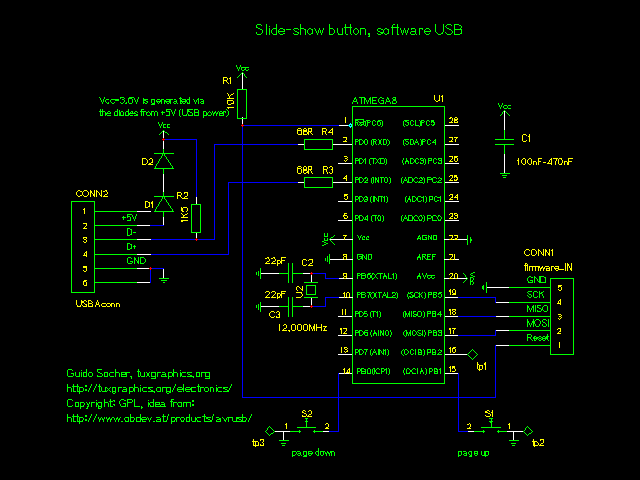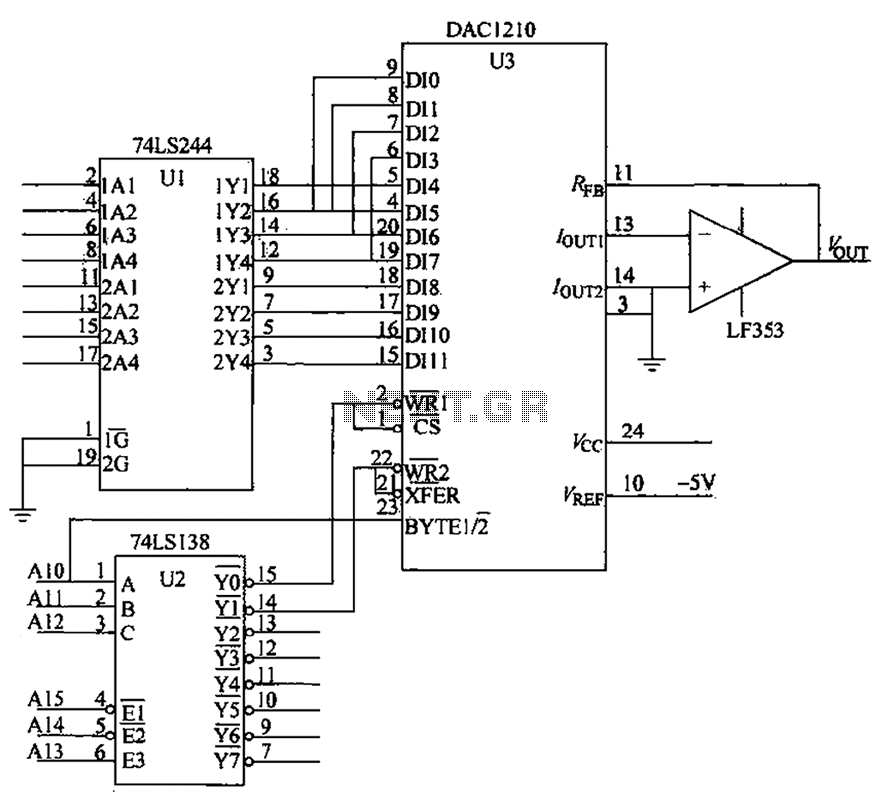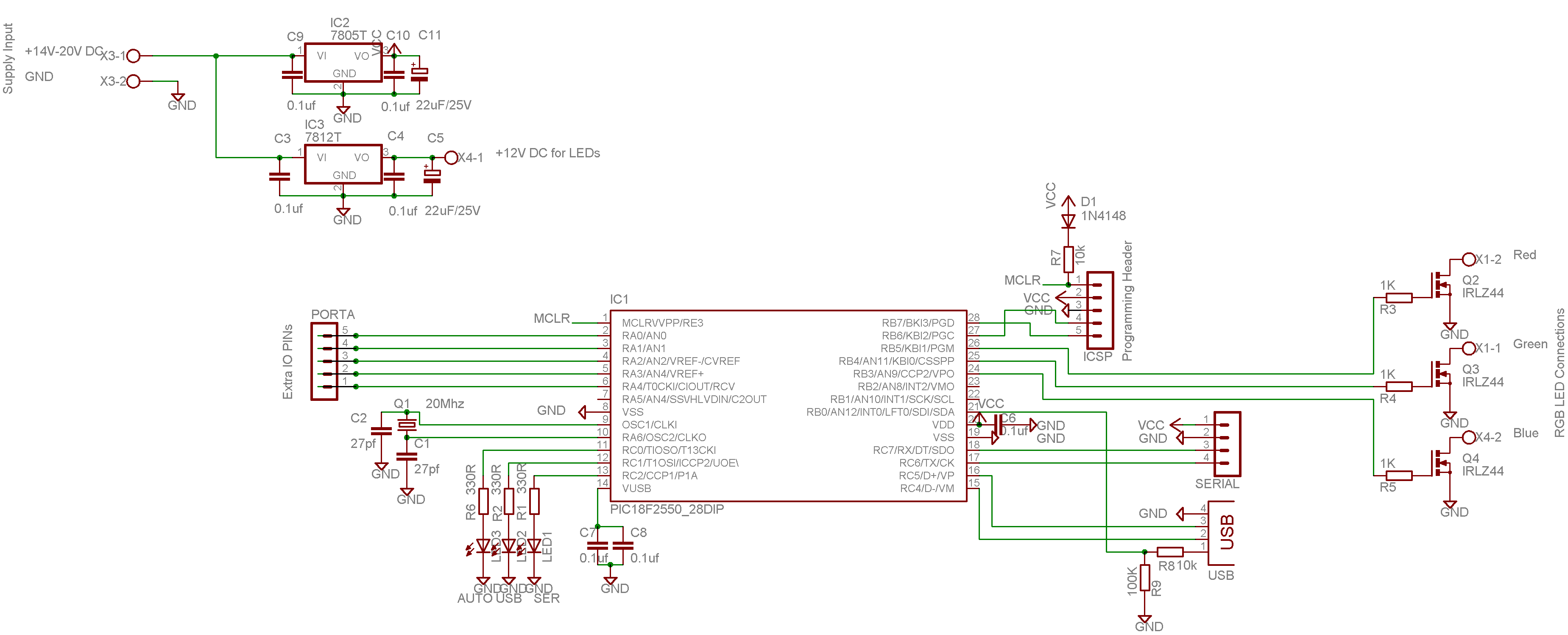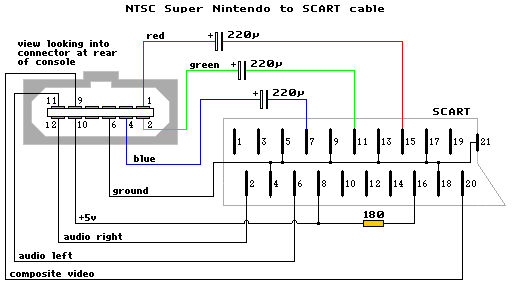
DAC schematic diagram of the USB interface formed by PCM2702
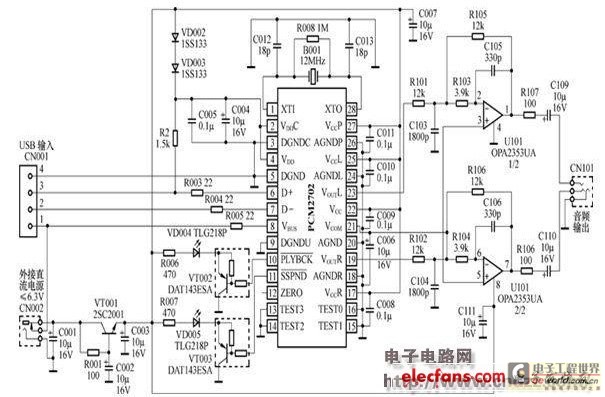
The peripheral circuit is straightforward, consisting of a DAC schematic circuit diagram for a USB interface that utilizes the PCM2702. The output of the circuit can be directly connected to a power amplifier and is capable of driving headphones with an impedance of more than 32 ohms.
The described peripheral circuit features a Digital-to-Analog Converter (DAC) based on the PCM2702 chip, which is commonly used for USB audio applications. The PCM2702 integrates USB audio processing, allowing it to convert digital audio signals from a USB source into analog signals. The circuit diagram typically includes essential components such as capacitors, resistors, and possibly an op-amp to manage signal integrity and amplification.
The output stage of this circuit is designed to interface directly with a power amplifier. This allows for seamless integration into audio systems, providing a straightforward path for audio signals to be amplified for driving speakers or headphones. The ability to drive headphones with an impedance greater than 32 ohms indicates that the circuit can provide sufficient output power, ensuring that the audio is loud enough for typical listening levels without distortion.
In practical applications, the circuit may include additional features such as volume control, filtering to reduce noise, and protection mechanisms to safeguard against overcurrent conditions. The layout of the circuit should be optimized for minimal signal loss and interference, with careful routing of the power and ground lines to maintain audio fidelity.
Overall, this DAC schematic serves as a fundamental building block for USB audio systems, enabling high-quality sound reproduction while maintaining compatibility with various audio devices.Peripheral circuit is very simple, it is DAC schematic circuit diagram of the USB interface which adopts PCM2702 to make the picture, the Ausgang of circuit can be connected with the power amplifier directly, can drive earphone of more than 32 ohms too. 🔗 External reference
The described peripheral circuit features a Digital-to-Analog Converter (DAC) based on the PCM2702 chip, which is commonly used for USB audio applications. The PCM2702 integrates USB audio processing, allowing it to convert digital audio signals from a USB source into analog signals. The circuit diagram typically includes essential components such as capacitors, resistors, and possibly an op-amp to manage signal integrity and amplification.
The output stage of this circuit is designed to interface directly with a power amplifier. This allows for seamless integration into audio systems, providing a straightforward path for audio signals to be amplified for driving speakers or headphones. The ability to drive headphones with an impedance greater than 32 ohms indicates that the circuit can provide sufficient output power, ensuring that the audio is loud enough for typical listening levels without distortion.
In practical applications, the circuit may include additional features such as volume control, filtering to reduce noise, and protection mechanisms to safeguard against overcurrent conditions. The layout of the circuit should be optimized for minimal signal loss and interference, with careful routing of the power and ground lines to maintain audio fidelity.
Overall, this DAC schematic serves as a fundamental building block for USB audio systems, enabling high-quality sound reproduction while maintaining compatibility with various audio devices.Peripheral circuit is very simple, it is DAC schematic circuit diagram of the USB interface which adopts PCM2702 to make the picture, the Ausgang of circuit can be connected with the power amplifier directly, can drive earphone of more than 32 ohms too. 🔗 External reference

